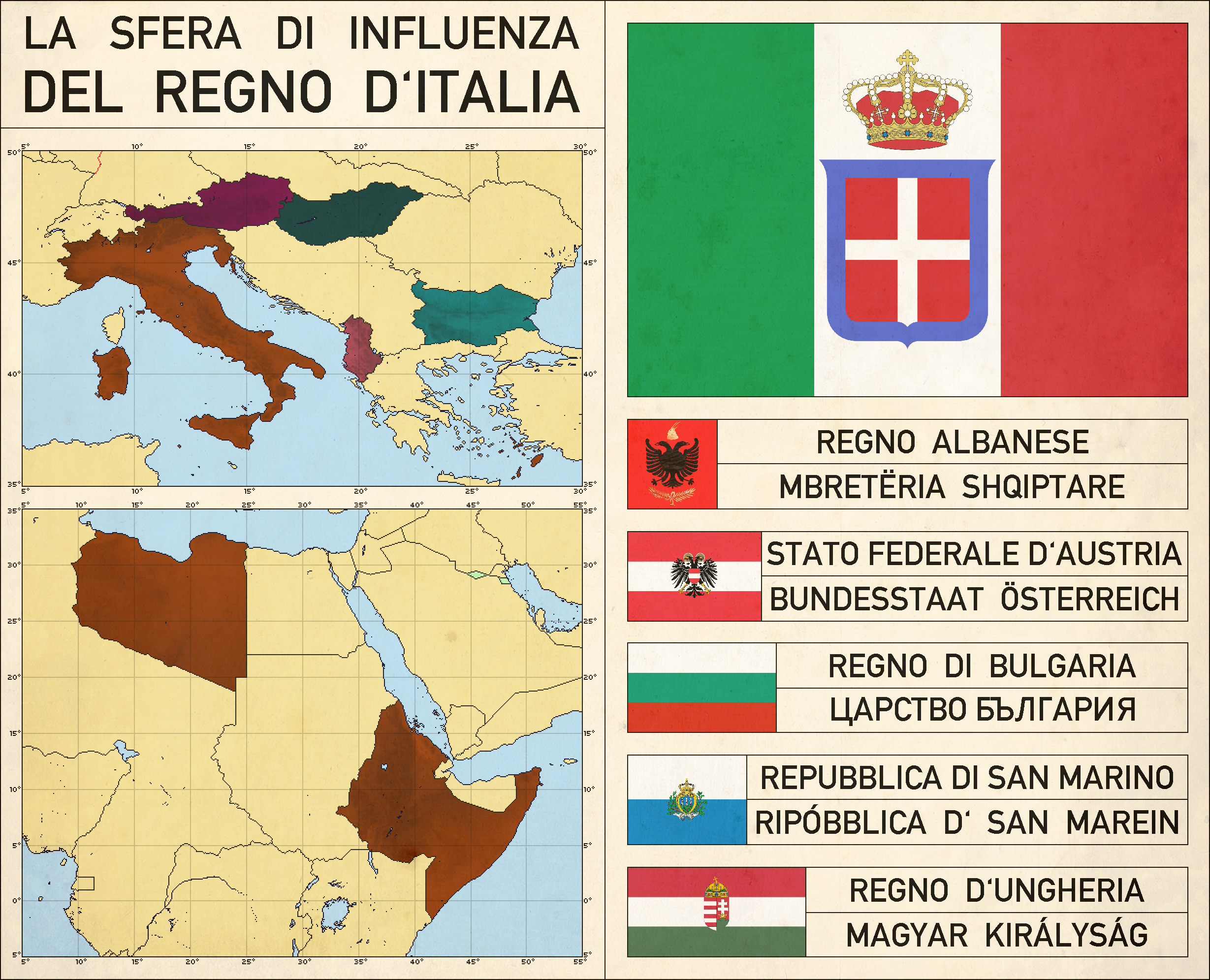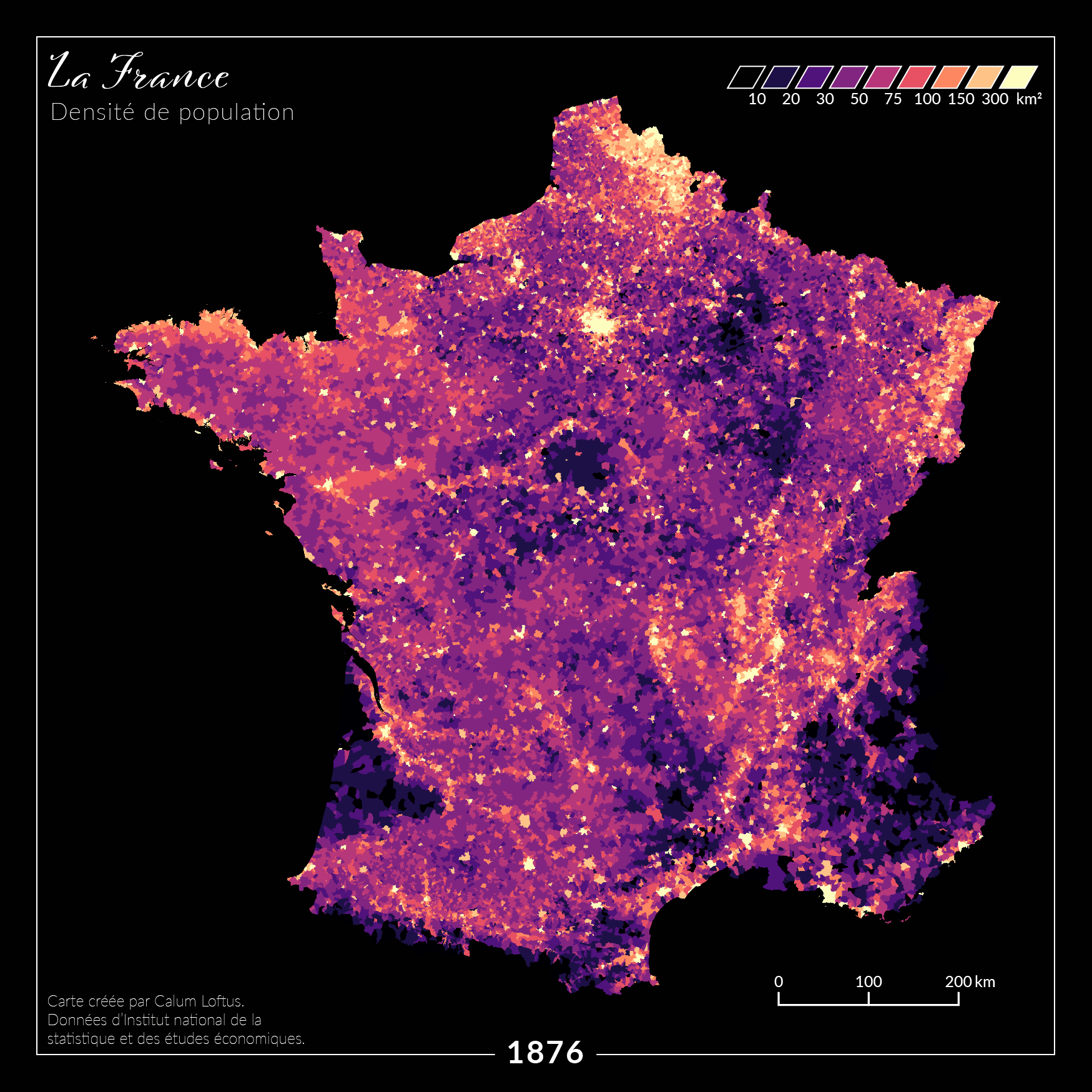HOME | DD
 AdvisorAleph — Sphere of Influence of the Kingdom of Italy
AdvisorAleph — Sphere of Influence of the Kingdom of Italy

#map
Published: 2021-08-28 00:52:22 +0000 UTC; Views: 10485; Favourites: 75; Downloads: 6
Redirect to original
Description
The Stresa Front was an agreement between France, Italy, and the United Kingdom that an independent Austria "would continue to inspire their common policy." The Anglo-German Naval Agreement just two months later, coupled with Italy's ejection from the international community following the Second Italo-Ethiopian War, spelled the quick demise of this agreement. The Stresa Front is often cited as the last chance anyone had to prevent World War II, and its collapse ensured Italy's fate as an Axis power.
In this alternate timeline, the Anglo-German Naval Agreement never came to be and the Stresa Front never collapsed as a result. Italian participation was considered more important than Ethiopia's independence by France and the United Kingdom, so Italy wasn't left diplomatically isolated with Germany as their only available ally. In 1938, the German Reich gave the Austrian government an ultimatum to resign in favour of a new German-run puppet government. Austria, backed by the Stresa Front, refused to concede, resulting in the Austro-German War. Germany's declaration of war was quickly met with Italian reinforcements in Austria and a new front along the French Border. Although the Stresa Front did have initial momentum, the war quickly bogged down into a war of attrition, featuring the return of trench warfare.
Germany was never going to win the war, and the international community knew it. Poland, taking advantage of Germany's certain defeat, entered the war and started a new front. The Germans were now overextended and fighting three fronts, and it wasn't long before the front lines collapsed in 1939 and Germany was pacified for the second time in twenty years. In the aftermath, the Territory of the Saar Basin was returned to French jurisdiction and the Rhineland was reoccupied by the victors. East Prussia became independent, Denmark gained minor territory in Schleswig, the Netherlands received minor gains, and Poland gained Upper Silesia. A democratic government was reintroduced to Germany and Adolf Hitler was ironically exiled to Austria.
Following the war, Italy was no longer seen as the "Least of the Great Powers" and Rome was declared the centre of a fascist "axis," around which neighbouring states "revolved." Some fascist states, such as San Marino under the Sammarinese Fascist Party, were already aligned with Italy prior to the war. However, the more notable members of Hungary and Bulgaria weren't aligned until 1940 and 1941, respectively. The Kingdom of Hungary in particular was promised the return of its former territories under the Austro-Hungarian Monarchy. Romania and Yugoslavia were closely aligned with France, which prevented the states' territorial expansions for a time. Austria, although it enjoyed protection from all three members of the Stresa Front, was most influenced by Italy due to their shared border and ideology.
The sphere of influence of the Kingdom of Italy following the Austro-German War was surprisingly cooperative for a fascist alliance largely built on irredentism. However, the so-called "Rome Axis" simply wasn't capable of competing with the Anglo-French Alliance and was relatively short-lived. Despite its size and supposed influence, what would soon become the Rome Axis was by no means glorious. The governments involved were brutal fascist dictatorships that abused their own populations and massacred ethnic minorities. Something as petty as territorial control doesn't warrant glorification, especially when crimes against humanity were involved.
I used the 8K-BAM basemap with the TOAST3R 1.4 colour scheme. The fonts used are 04b03 and DIN 1451.
Related content
Comments: 2

👍: 1 ⏩: 1

👍: 0 ⏩: 0

























